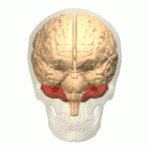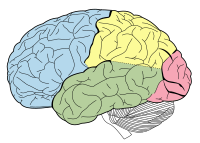
Typical Development of Finger Position Sense From Late Childhood to Adolescence
Sign Up to like & getrecommendations! Published in 2022 at "Journal of Motor Behavior"
DOI: 10.1080/00222895.2022.2134287
Abstract: Abstract Finger position sense is a proprioceptive modality highly important for fine motor control. Its developmental time course is largely unknown. This cross-sectional study examined its typical development in 138 children (8–17 years) and a group… read more here.
Keywords: typical development; finger position; position; position sense ... See more keywords

Mu Rhythm during Standing and Walking Is Altered in Children with Unilateral Cerebral Palsy Compared to Children with Typical Development
Sign Up to like & getrecommendations! Published in 2020 at "Developmental Neurorehabilitation"
DOI: 10.1080/17518423.2020.1756005
Abstract: ABSTRACT Background: Rehabilitation in cerebral palsy (CP) seeks to harness neuroplasticity to improve movement, including walking, yet cortical activation underlying gait is not well understood. Methods: We used electroencephalography (EEG) to compare motor related cortical… read more here.
Keywords: cerebral palsy; children typical; children unilateral; typical development ... See more keywords

Neuropsychological stimulation of executive functions in children with typical development: A systematic review
Sign Up to like & getrecommendations! Published in 2018 at "Applied Neuropsychology: Child"
DOI: 10.1080/21622965.2016.1241950
Abstract: ABSTRACT This systematic review aimed to characterize empirical studies on neuropsychological interventions to stimulate executive functions in children with typical development. Searches were conducted according to the PRISMA method. Nineteen (19) studies on the analysis… read more here.
Keywords: children typical; executive functions; executive; school ... See more keywords

Outcomes and Hand Use of Reaching Attempts: Comparison of Infants at Risk for Developmental Disability and Infants With Typical Development
Sign Up to like & getrecommendations! Published in 2022 at "Frontiers in Psychology"
DOI: 10.3389/fpsyg.2022.712252
Abstract: Background Infants at risk for developmental disabilities often show signs of motor delay. Reaching is a skill that can help us identify atypical motor trajectories in early infancy. Researchers have studied performance after onset of… read more here.
Keywords: hand use; infants risk; typical development; hand ... See more keywords

Neurodevelopmental Trajectories in Children With Internalizing, Externalizing and Emotion Dysregulation Symptoms
Sign Up to like & getrecommendations! Published in 2022 at "Frontiers in Psychiatry"
DOI: 10.3389/fpsyt.2022.846201
Abstract: Introduction Childhood and adolescence are crucial periods for brain and behavioral development. However, it is not yet clear how and when deviations from typical brain development are related to broad domains of psychopathology. Methods Using… read more here.
Keywords: typical development; psychopathology; development; brain ... See more keywords

The Relationship between Expressive Language Sampling and Clinical Measures in Fragile X Syndrome and Typical Development
Sign Up to like & getrecommendations! Published in 2020 at "Brain Sciences"
DOI: 10.3390/brainsci10020066
Abstract: Language impairment is a core difficulty in fragile X syndrome (FXS), and yet standardized measures lack the sensitivity to assess developmental changes in the nature of these impairments. Expressive Language Sampling Narrative (ELS-N) has emerged… read more here.
Keywords: clinical measures; fragile syndrome; expressive language; language sampling ... See more keywords